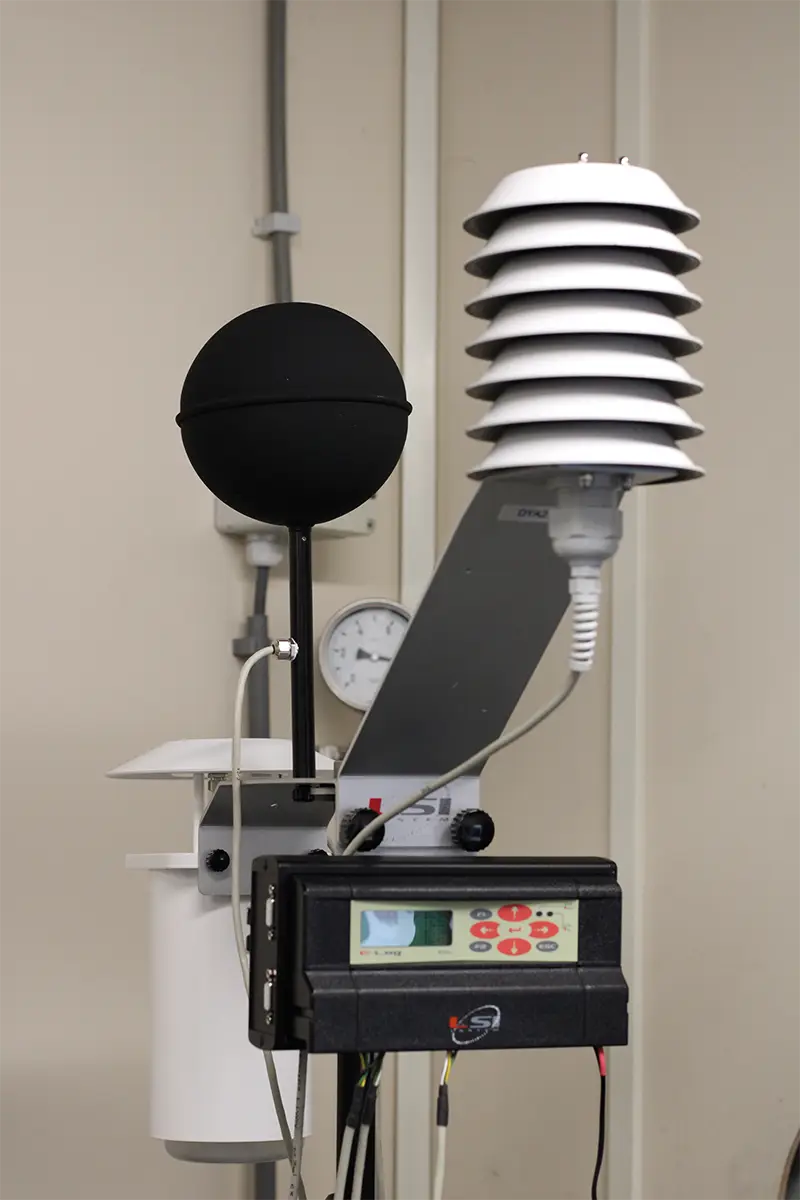Wet Bulb Globe Temperature (WBGT)
A well-known parameter for assessing risks when working in hot environments is the so-called WBGT. Working in heat can pose several risks. WBGT allows estimation of the body’s ability to dissipate heat to the environment, which in turn helps determine how long a person can safely remain in a hot environment. The core concept, just like working in comfort or cold, is the human heat balance.
Parameters
The following parameters play a role in this assessment:
- Air temperature;
- Relative humidity;
- Air velocity;
- Radiant temperature;
- Physical workload;
- Clothing/insulation.
WBGT
 A WBGT measurement combines the effects of radiation, temperature, humidity, and air velocity. This is done by measuring three variables: dry bulb temperature (ta), natural wet bulb temperature (tnw), and globe temperature (tg). These are defined in EN-ISO 7243:
A WBGT measurement combines the effects of radiation, temperature, humidity, and air velocity. This is done by measuring three variables: dry bulb temperature (ta), natural wet bulb temperature (tnw), and globe temperature (tg). These are defined in EN-ISO 7243:
Without solar load (indoor WBGT):
WBGT = 0.7tnw + 0.3tg
With solar load (outdoor WBGT):
WBGT = 0.7tnw + 0.2tg + 0.1ta
Natural Wet Bulb Temperature
The natural wet bulb temperature has the greatest impact on the WBGT. This temperature is practically that of a thermometer wrapped in a wet cotton sleeve, fully exposed to ambient air. It is always lower than the dry bulb temperature. Depending on the airspeed and humidity, heat is extracted through evaporation. This parameter is crucial as it reflects the body’s potential to dissipate heat through sweating. As a result, the body’s core temperature rises more slowly—or not at all.
 In a risk assessment based on WBGT measurement, both physical activity (which generates heat) and corrections for clothing (insulation/heat retention) are taken into account.
In a risk assessment based on WBGT measurement, both physical activity (which generates heat) and corrections for clothing (insulation/heat retention) are taken into account.
Sensor Specifications and Importance according to EN-ISO 7243
The EN-ISO 7243 clearly specifies the requirements for sensors used to measure air temperature, globe temperature, and wet bulb temperature. As mentioned, the wet bulb temperature is the most critical factor in WBGT. It can only be accurately determined using a sensor with a wet cotton sleeve. Although EN-ISO 7243 allows for estimating the wet bulb value using measurements of air temperature, globe temperature, humidity, and airspeed, a direct measurement with a wetted sensor is both simpler and more accurate.
Contact Us
Ravebo B.V. supplies and installs only systems that comply with this standard for WBGT measurements. Portable meters are commonly used, but permanent WBGT monitoring is becoming more widespread. For continuous monitoring, we provide wet bulb sensors with water tanks up to 1 liter capacity. Have questions or want to learn more? Feel free to contact us!
